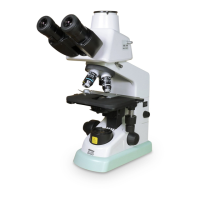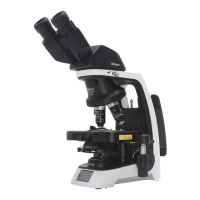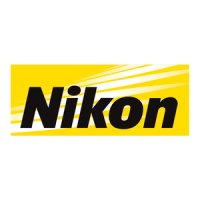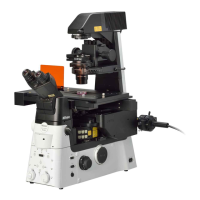38
2
Mechanical Problems
High-power objective
contacts slide when
changed over from low
power.
Slide upside down. Turn over the slide so that the
cover glass faces up.
Objectives being loose. Screw onto the revolving
nosepiece securely.
Diopter not adjusted correctly. Adjust. (P. 18)
Cover glass too thick. Use a cover glass of the
specified thickness (0.17 mm).
Troubles Causes Corrective Measures
Image cannot be focused
with high-power
objectives.
Slide upside down. Turn over the slide so that the
cover glass faces up.
Cover glass too thick. Use a cover glass of the
specified thickness (0.17 mm).
Difference in focal point
too large when switching
from one objective to
another.
Diopter not adjusted correctly. Adjust. (P. 18)
Objectives being loose. Screw onto the revolving
nosepiece securely.
Note: Do not switch the objective directly to 60x (or 100x)
from 4x.
Always focus on the specimen with 10X objective
before switching to high magnification objectives.
Specimen image jumps
when specimen is moved
by the stage.
Specimen holder not securely
fastened to the stage.
Fasten securely. (P. 29)
Excessive eye fatigue.
Interpupillary distance not
adjusted correctly.
Adjust. (P. 14)
Inadequate brightness or
illumination.
Adjust brightness using the
control dial. (P. 14)
Diopter not adjusted correctly. Adjust. (P. 18)
Binocular images not
integrated.
Interpupillary distance not
adjusted correctly.
Adjust. (P. 14)
Diopter not adjusted correctly. Adjust. (P. 18)

